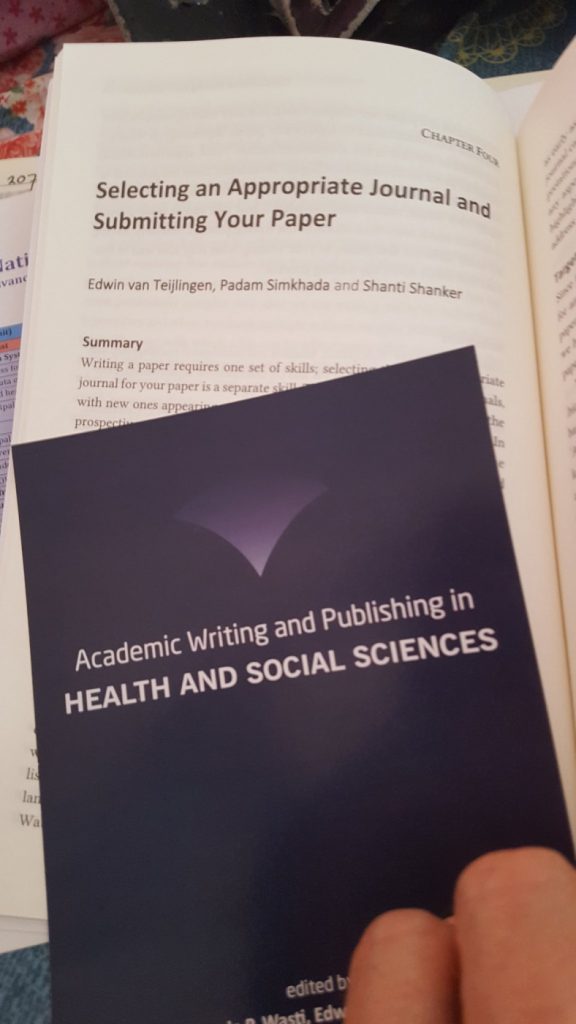 Two days ago Bournemouth University (BU) Professors Vanora Hundley and Edwin van Teijlingen together with University of Huddersfield academics Dr. Sharada Prasad Wasti and Prof. Padam Simkhada launched their edited collection Academic Writing and Publishing in Health and Social Sciences. This textbook is a guide for people attempting any kind of writing on social science or health science. Whether an MSc student, a PhD student, a health professional, a researcher, an academic or an editor, the book is packed with practical tips, expert advice, and examples to develop skills and build confidence. Each chapter addresses a different aspect of the art and science of writing and publishing. Written in a most accessible style, the book will be a particularly handy tool for budding academics who want to see their work in print.
Two days ago Bournemouth University (BU) Professors Vanora Hundley and Edwin van Teijlingen together with University of Huddersfield academics Dr. Sharada Prasad Wasti and Prof. Padam Simkhada launched their edited collection Academic Writing and Publishing in Health and Social Sciences. This textbook is a guide for people attempting any kind of writing on social science or health science. Whether an MSc student, a PhD student, a health professional, a researcher, an academic or an editor, the book is packed with practical tips, expert advice, and examples to develop skills and build confidence. Each chapter addresses a different aspect of the art and science of writing and publishing. Written in a most accessible style, the book will be a particularly handy tool for budding academics who want to see their work in print.
The volume has been put together by editors with a long and wide-ranging experience as journal editors, peer reviewers, book authors and authors of papers published in scientific journals across the globe. 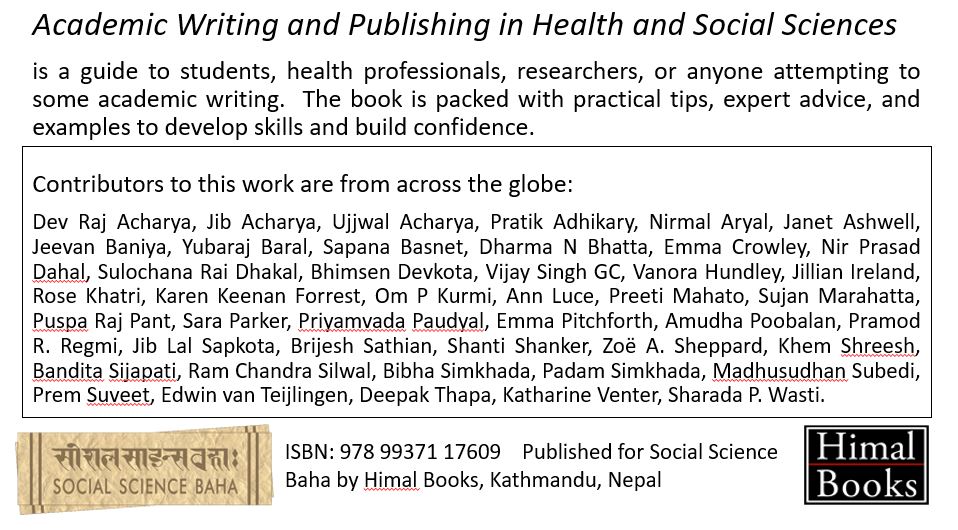 They have brought together authors from Europe, Nepal, the Middle East, and the USA to share their skills, wisdom, and experience in the production of this very useful and usable book. The collaborators are all listed in the box on the side, but we would like to highlight those authors with a BU link. The authors include former BU PhD students Dr. Jib Acharya and Dr. Pratik Adhikary. We have contributions from both the current and a former BU librarian, Emma Crowley and Janet Ashwell respectively. There are contributions from several BU Visiting Faculty: Prof. Padam Simkhada & Dr. Bibha Simkhada (both University of Huddersfield), Dr. Emma Pitchforth (University of Exeter), Dr. Brijesh Sathian (based in Qatar), and Jillian Ireland (Professional Midwifery Advocate at University Hospitals Dorset NHS Foundation Trust). Several BU staff contributed to various chapters: Prof. Ann Luce, Dr. Shanti Shanker, Dr. Preeti Mahato, Dr. Nirmal Aryal, Dr. Pramod Regmi, and last but not least, current BU PhD student Sulochana Rai Dhakal.
They have brought together authors from Europe, Nepal, the Middle East, and the USA to share their skills, wisdom, and experience in the production of this very useful and usable book. The collaborators are all listed in the box on the side, but we would like to highlight those authors with a BU link. The authors include former BU PhD students Dr. Jib Acharya and Dr. Pratik Adhikary. We have contributions from both the current and a former BU librarian, Emma Crowley and Janet Ashwell respectively. There are contributions from several BU Visiting Faculty: Prof. Padam Simkhada & Dr. Bibha Simkhada (both University of Huddersfield), Dr. Emma Pitchforth (University of Exeter), Dr. Brijesh Sathian (based in Qatar), and Jillian Ireland (Professional Midwifery Advocate at University Hospitals Dorset NHS Foundation Trust). Several BU staff contributed to various chapters: Prof. Ann Luce, Dr. Shanti Shanker, Dr. Preeti Mahato, Dr. Nirmal Aryal, Dr. Pramod Regmi, and last but not least, current BU PhD student Sulochana Rai Dhakal.
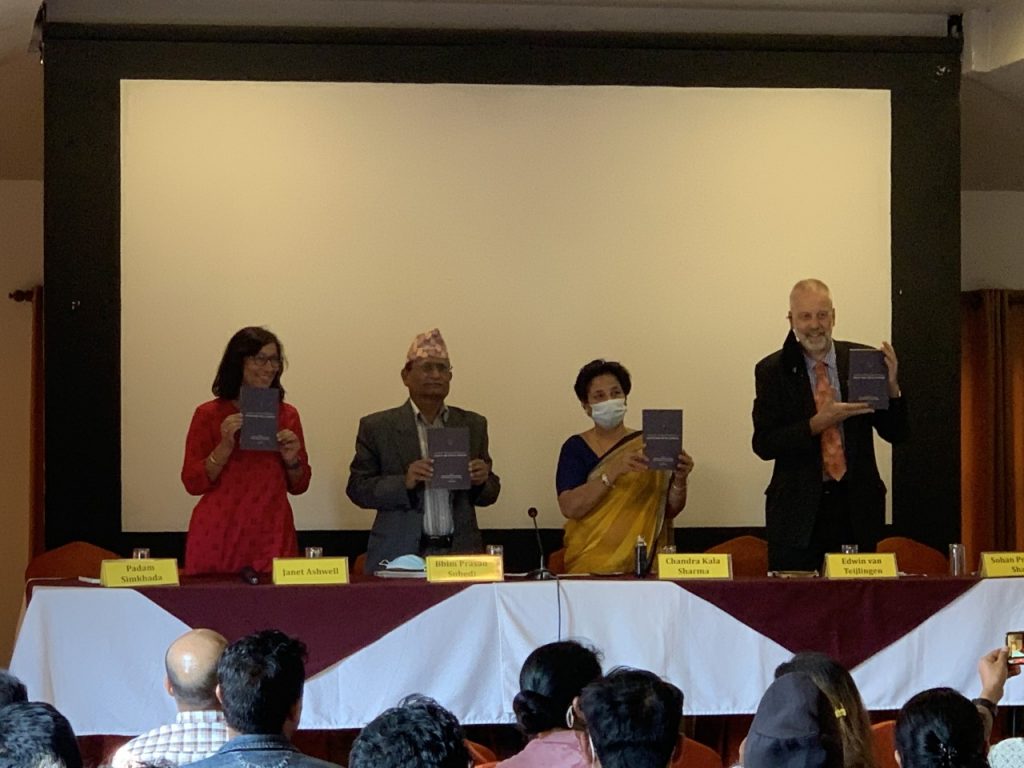 The launch in Kathmandu was hosted by Martin Chautari and supported by Green Tara Nepal (GTN). Over one hundred people attended this book launch. Part of the deal with Social Science Baha and the publisher Himal Books is that the book price will be kept low to keep it affordable for students and poorly paid lecturers in Nepal .
The launch in Kathmandu was hosted by Martin Chautari and supported by Green Tara Nepal (GTN). Over one hundred people attended this book launch. Part of the deal with Social Science Baha and the publisher Himal Books is that the book price will be kept low to keep it affordable for students and poorly paid lecturers in Nepal .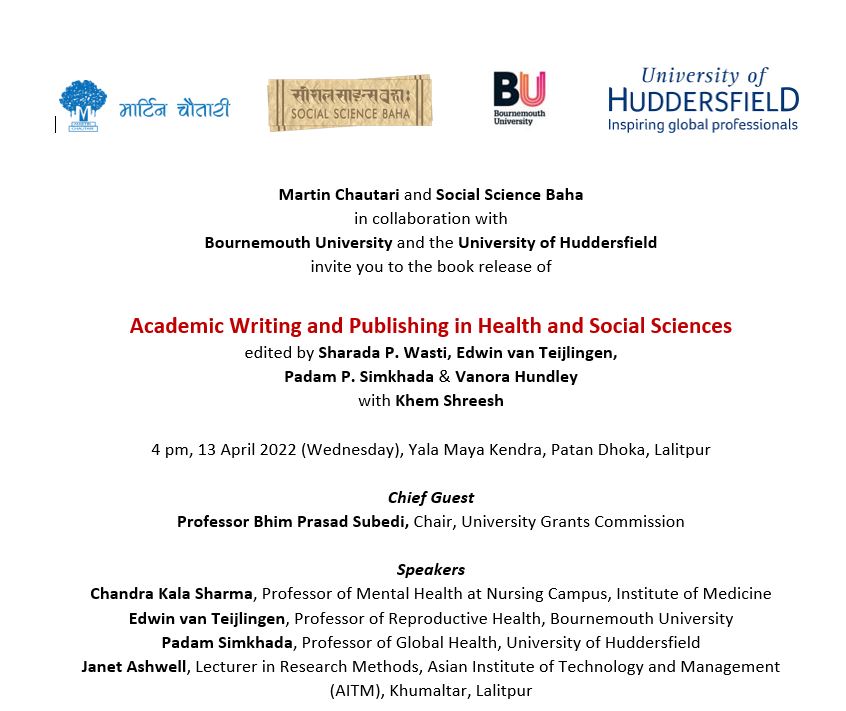

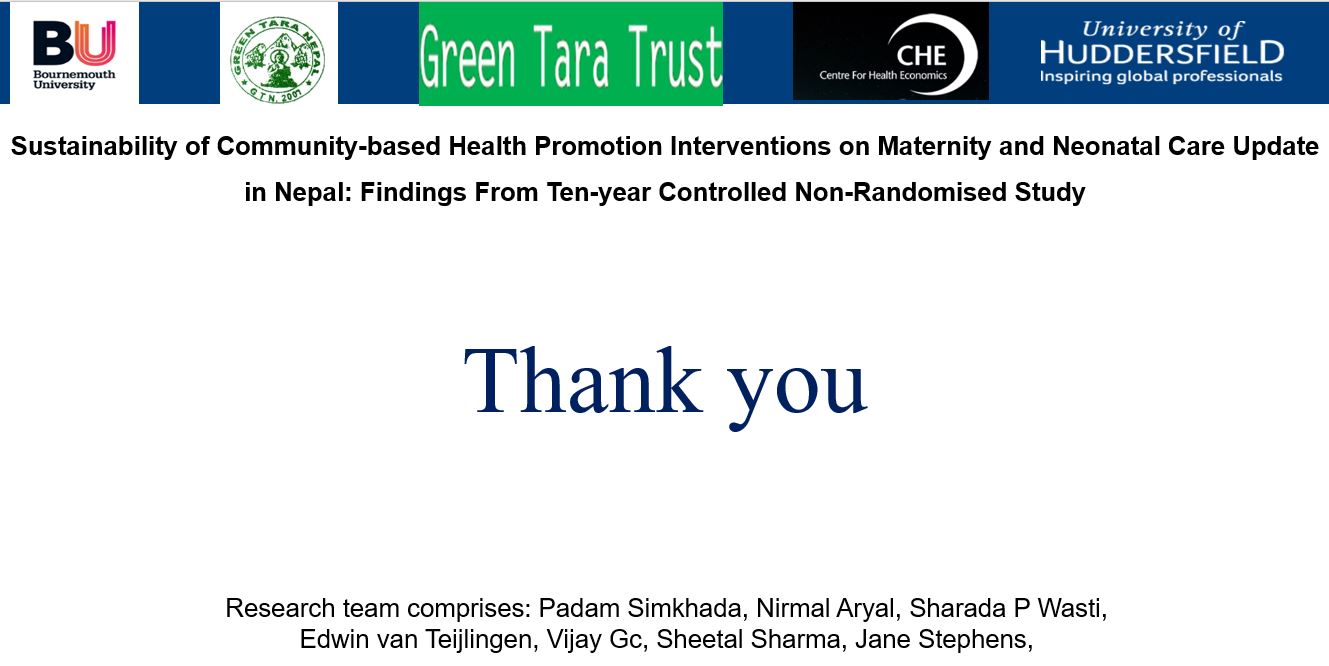
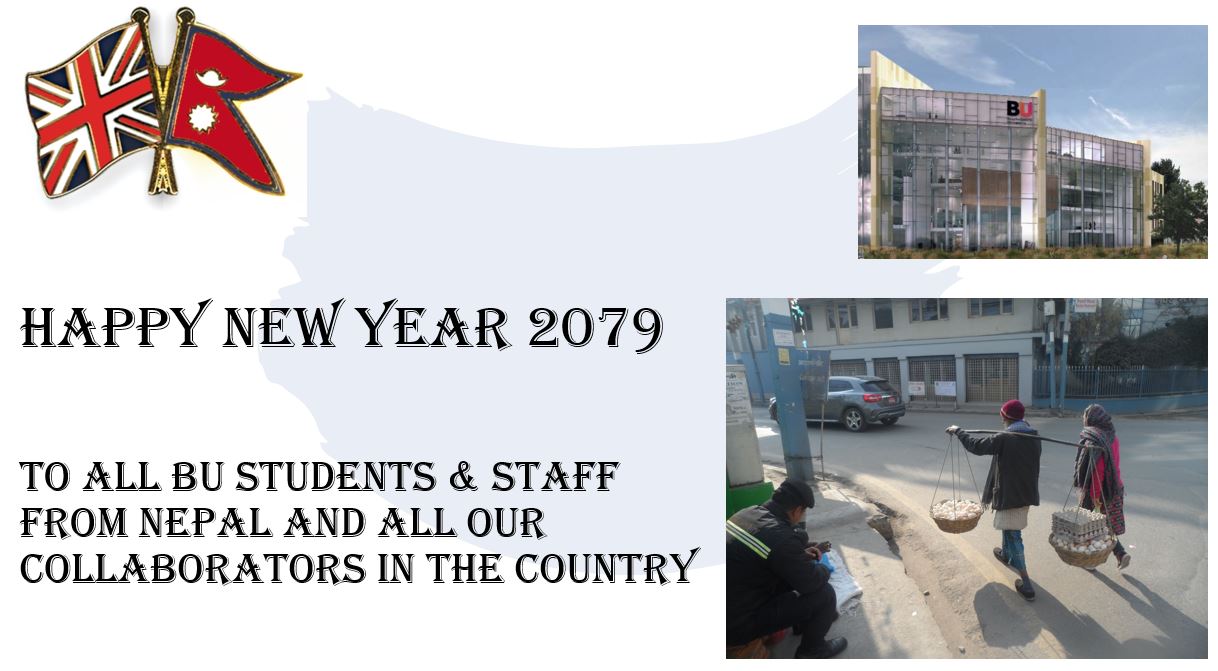
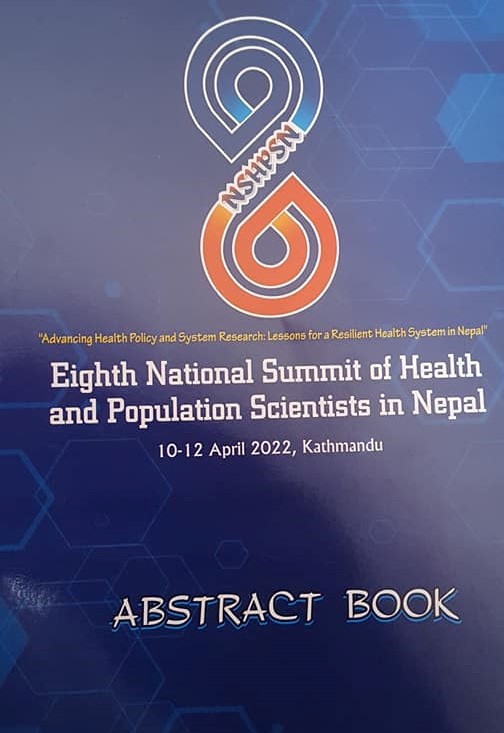
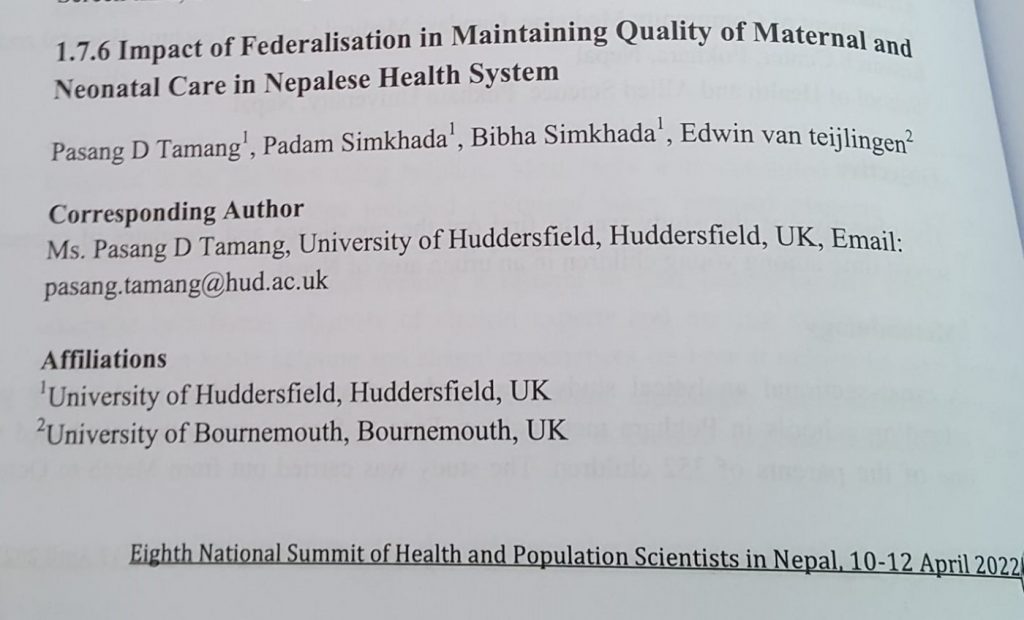
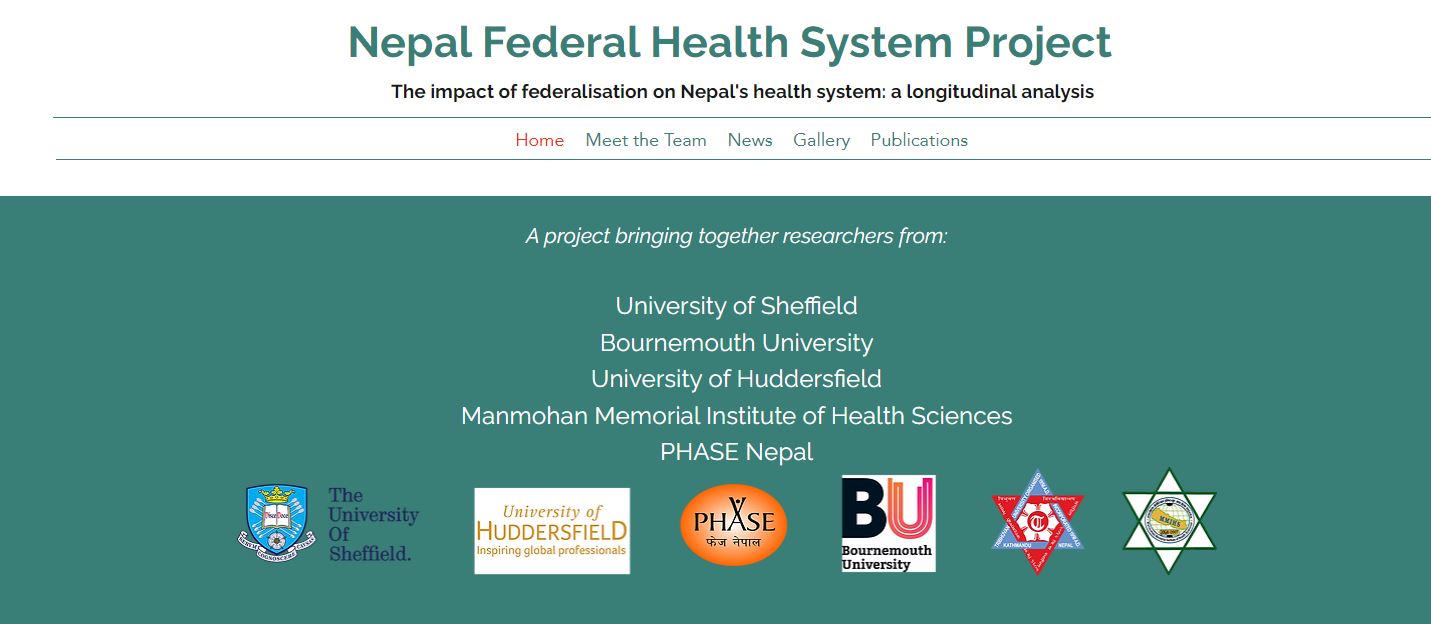

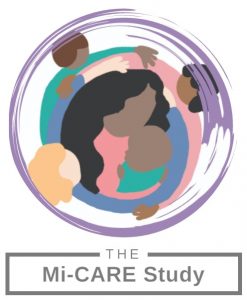
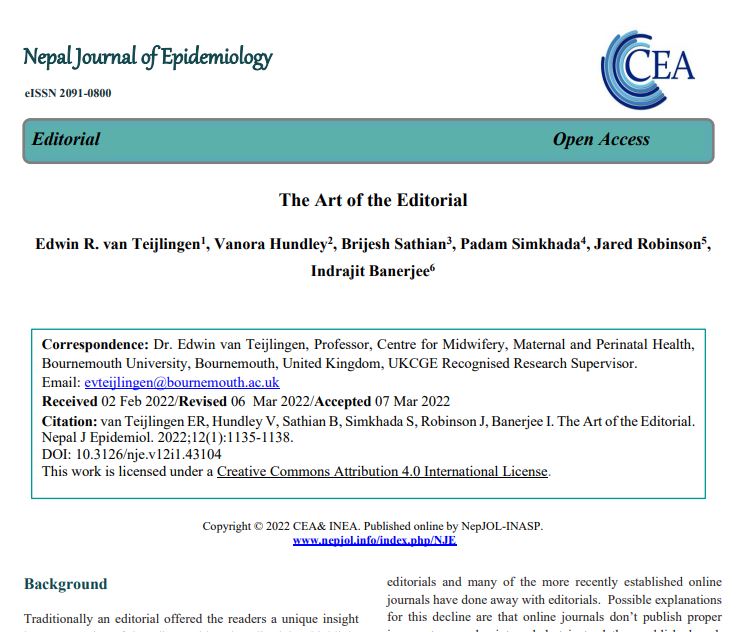

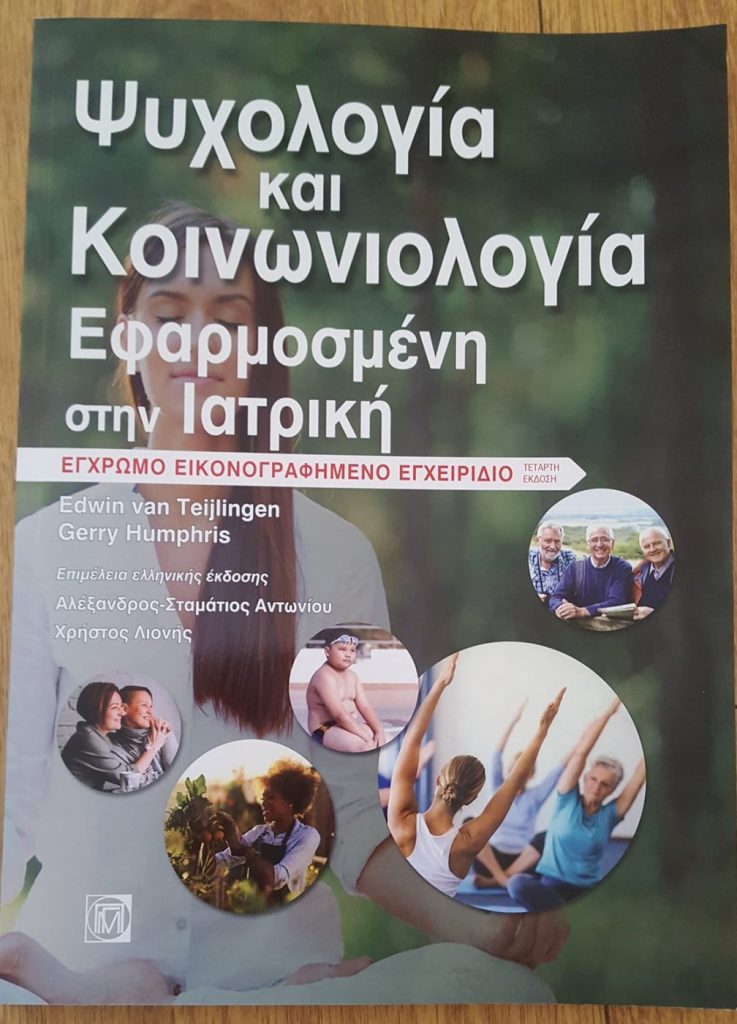

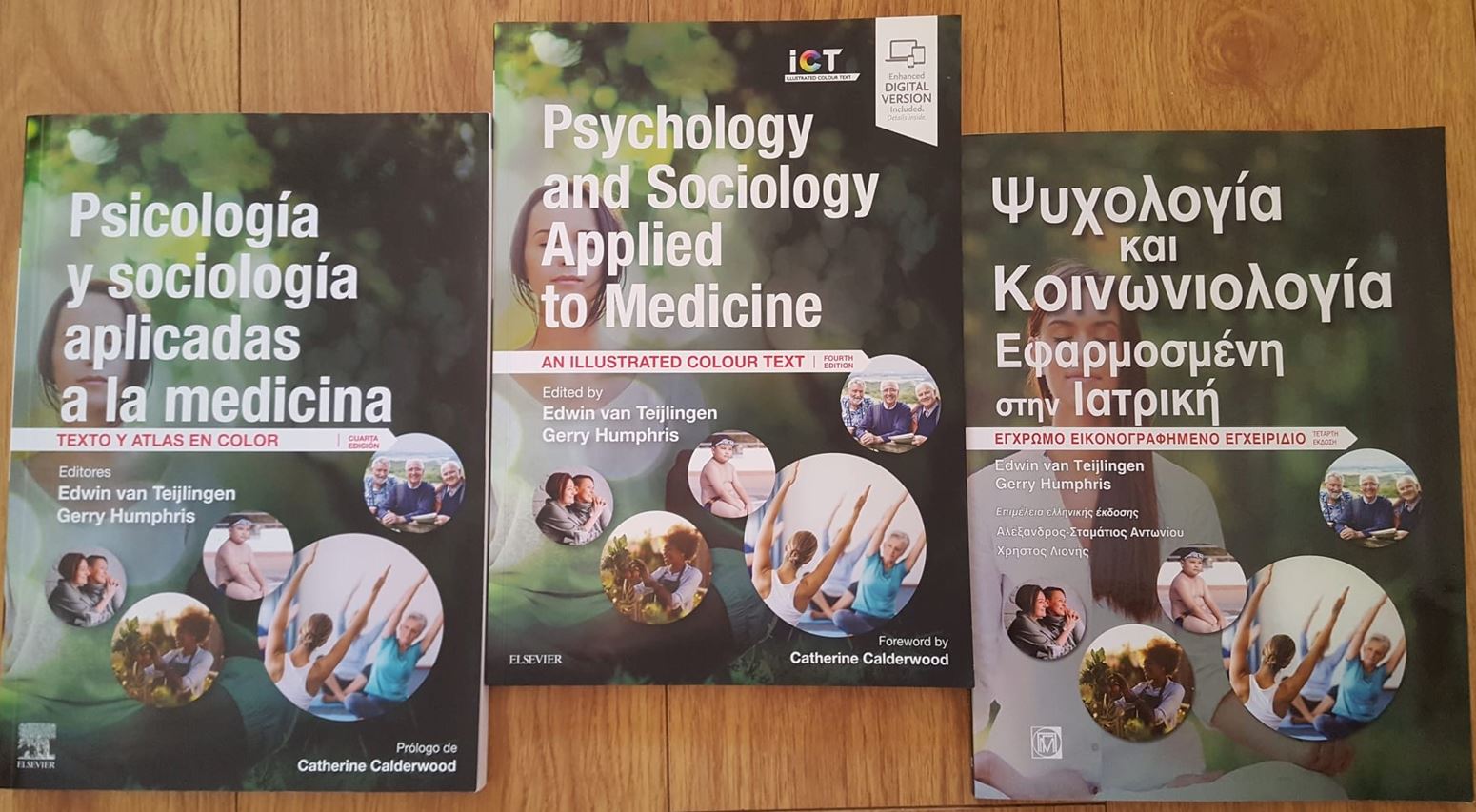


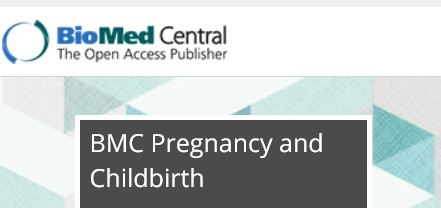
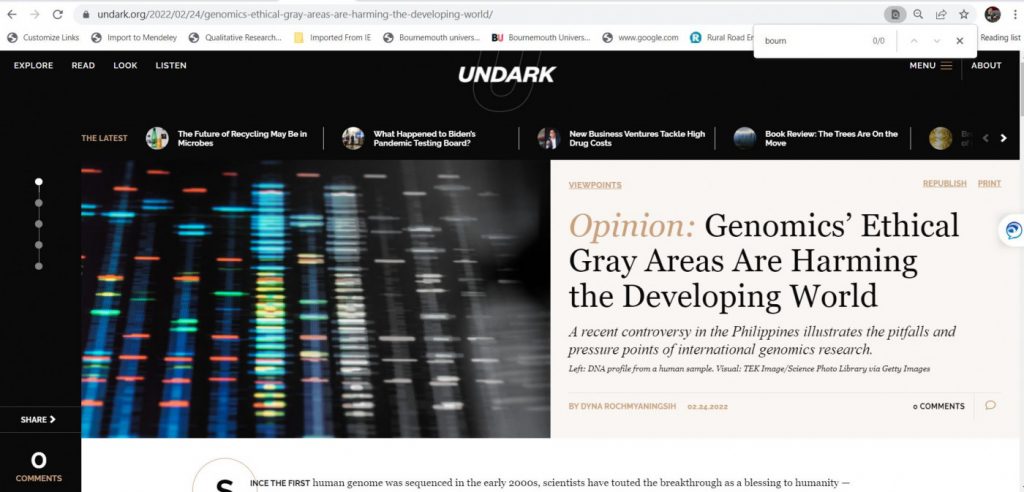
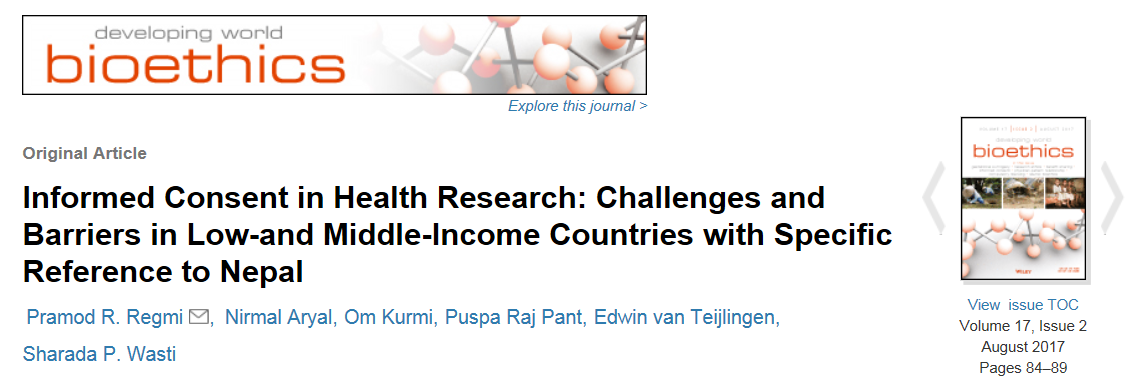
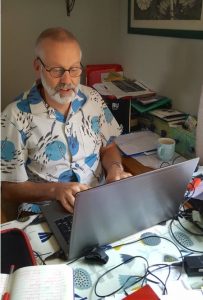 In academic life rejection is the norm, for both journal articles and grant applications, the average academic is more likely to fail than to succeed at any time. This can also be true, although to a lesser extent, for applications to present at academic conferences. At the time of writing this blog (12 February 2022), I have 299 published papers listed on the databases SCOPUS. Of these nearly 300 papers only two papers ever were accepted on first submission as submitted. Most papers went through one or two rounds revision in the light of comments and critique offered by reviewers, and sometimes also additional feedback from the journal’s editor.
In academic life rejection is the norm, for both journal articles and grant applications, the average academic is more likely to fail than to succeed at any time. This can also be true, although to a lesser extent, for applications to present at academic conferences. At the time of writing this blog (12 February 2022), I have 299 published papers listed on the databases SCOPUS. Of these nearly 300 papers only two papers ever were accepted on first submission as submitted. Most papers went through one or two rounds revision in the light of comments and critique offered by reviewers, and sometimes also additional feedback from the journal’s editor.
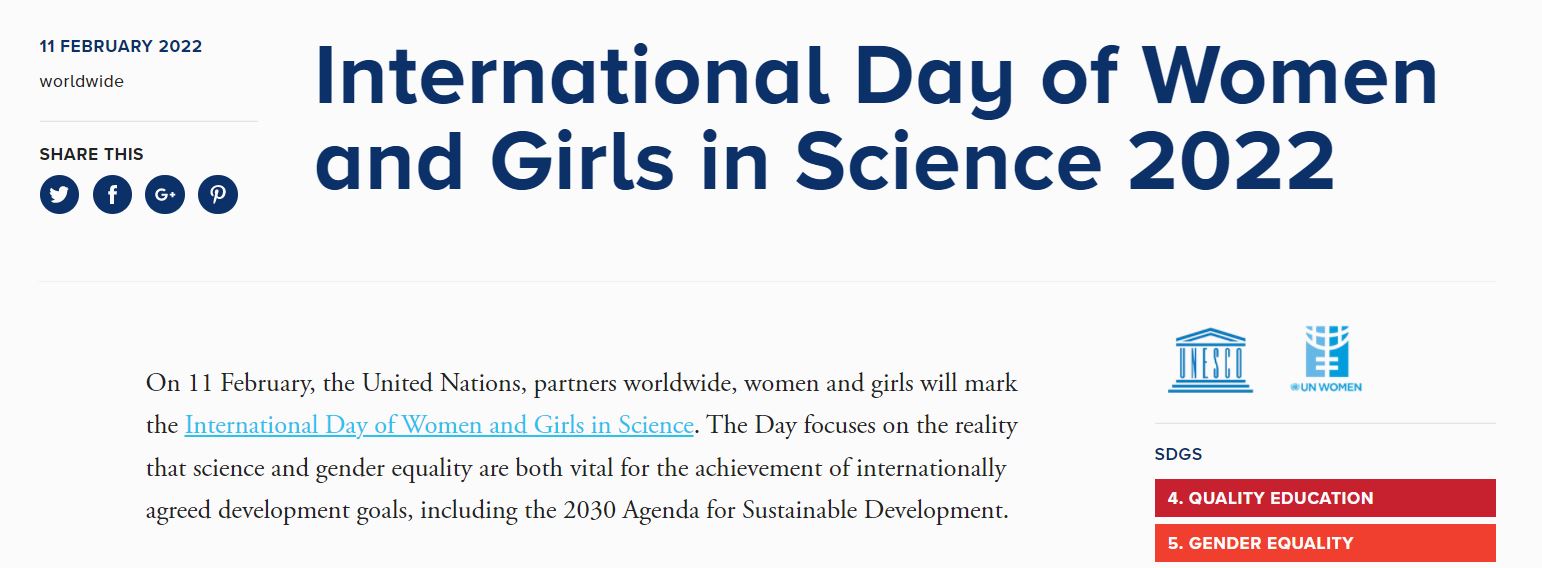
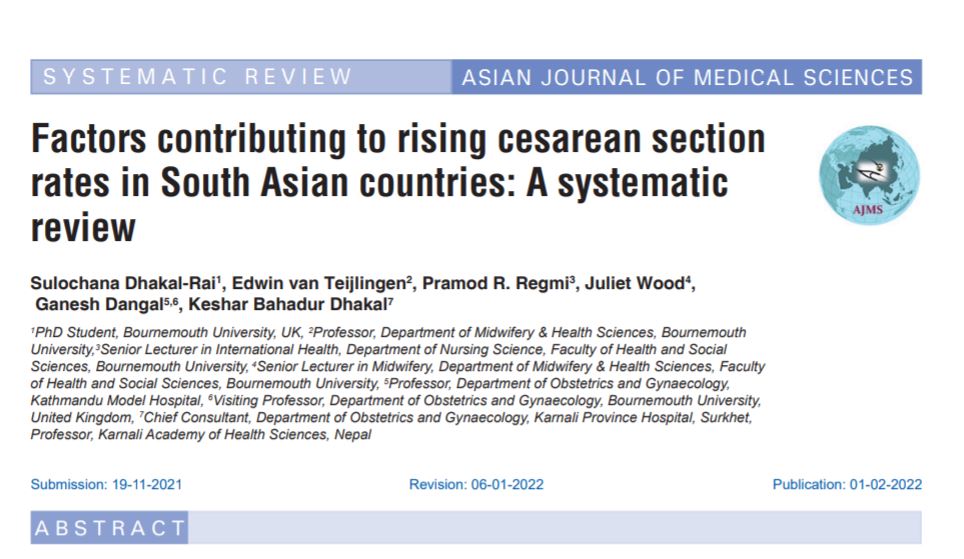 Congratulations to Bournemouth University’s PhD student Sulochana Dhakal-Rai on the publication today of the latest paper from her research thesis. This latest paper ‘
Congratulations to Bournemouth University’s PhD student Sulochana Dhakal-Rai on the publication today of the latest paper from her research thesis. This latest paper ‘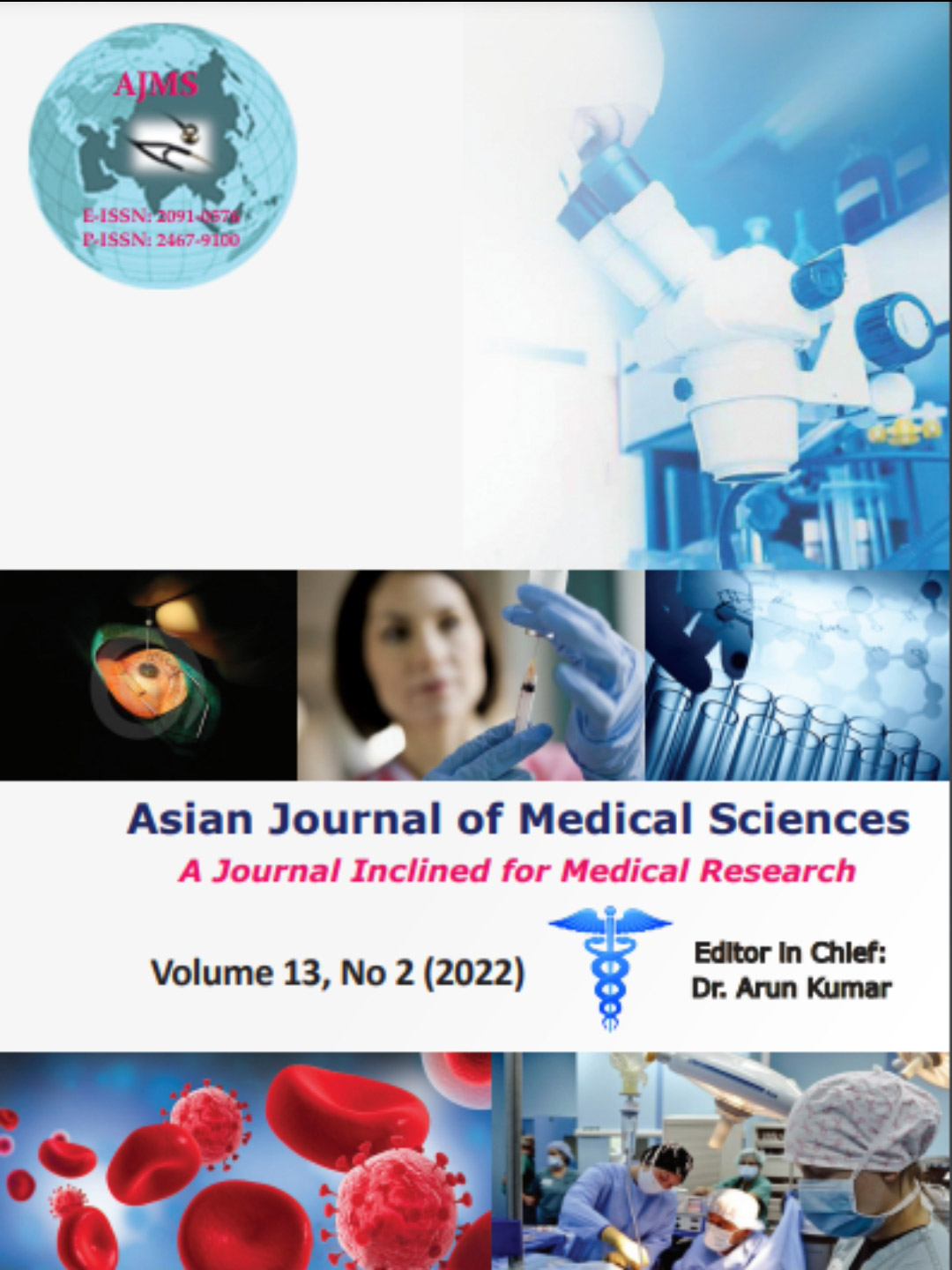 The paper is part of her PhD study of the rising CS rate in Nepal. This systematic review is co-authored with her BU PhD supervisors, Dr. Juliet Wood, Dr. Pramod Regmi and Prof. Edwin van Teijlingen as well as her Nepal-based supervisors Dr. Ganesh Dangel (FHSS Visiting Faculty) and Dr. Keshar Bahadur Dhakal. This is the sixth paper from Sulochana’s interesting and highly topical PhD thesis. The previous five were published in 2018, 2019 and 2021 [2-6].
The paper is part of her PhD study of the rising CS rate in Nepal. This systematic review is co-authored with her BU PhD supervisors, Dr. Juliet Wood, Dr. Pramod Regmi and Prof. Edwin van Teijlingen as well as her Nepal-based supervisors Dr. Ganesh Dangel (FHSS Visiting Faculty) and Dr. Keshar Bahadur Dhakal. This is the sixth paper from Sulochana’s interesting and highly topical PhD thesis. The previous five were published in 2018, 2019 and 2021 [2-6].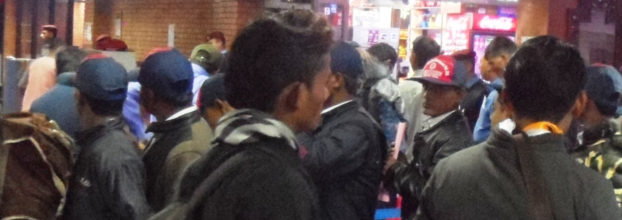

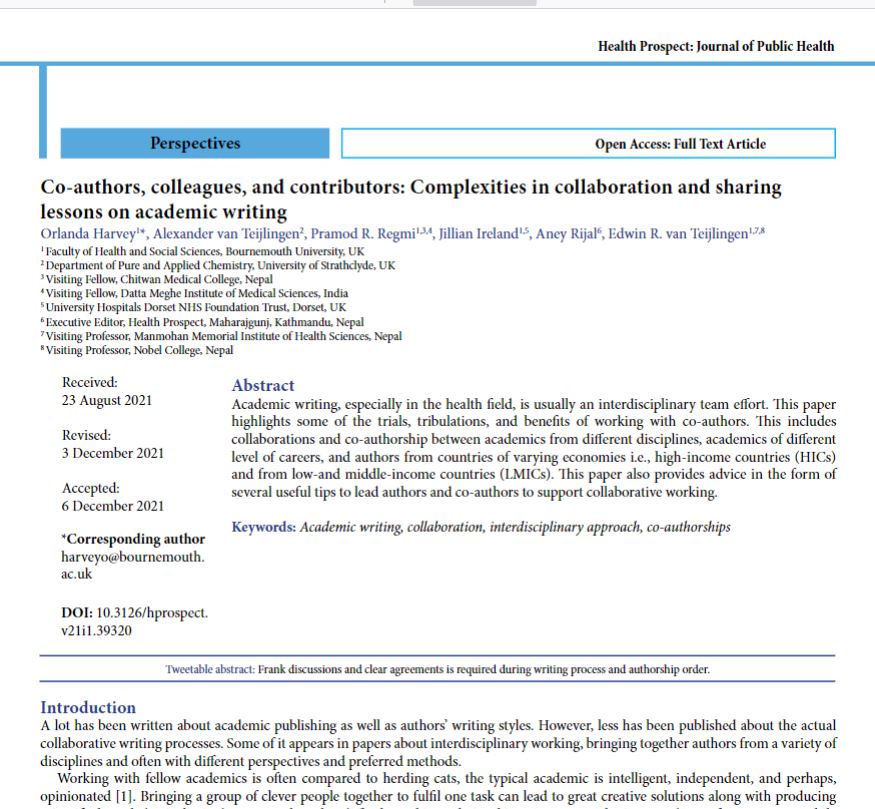
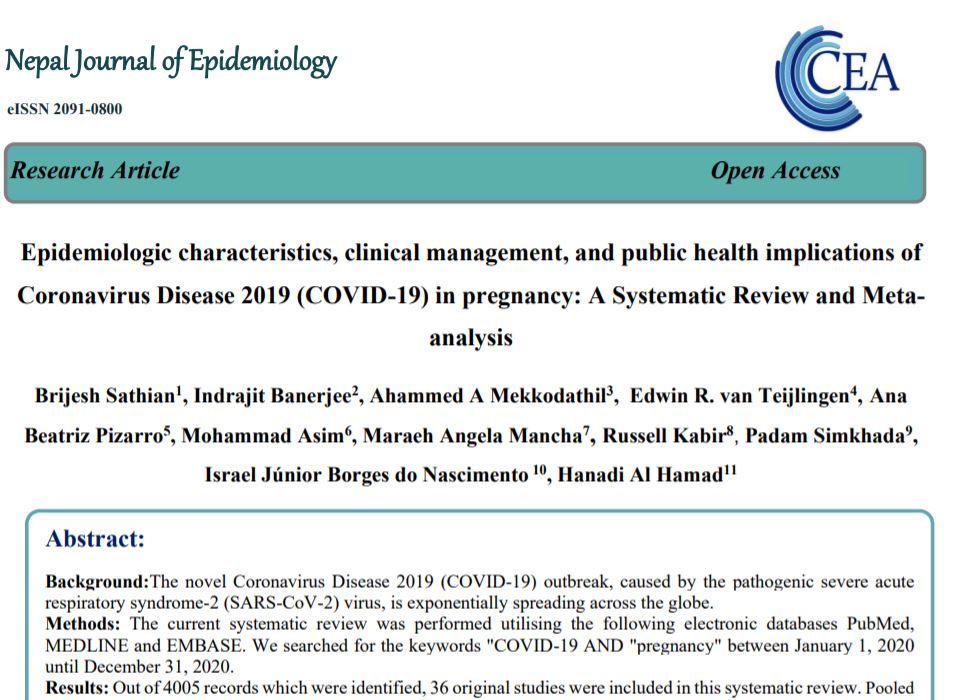 This review covered the published literature on the epidemiology, clinical management and public health prevention aspects of pregnancy and childbirth and coronavirus (COVID-19) up until December 2020. We worked hard and fast to submit the paper as soon as possible after the end of 2020 to be able to publish up-to-date findings. We managed this and submitted the paper on March 5th, the peer-review took some months and so did the making of the revisions. As a result we resubmitted the manuscript of 29 September and we got the acceptance email within a week. We made it into the next issue of the Nepal Journal of Epidemiology which published exactly one year after the data collection period had ended for our systematic review.
This review covered the published literature on the epidemiology, clinical management and public health prevention aspects of pregnancy and childbirth and coronavirus (COVID-19) up until December 2020. We worked hard and fast to submit the paper as soon as possible after the end of 2020 to be able to publish up-to-date findings. We managed this and submitted the paper on March 5th, the peer-review took some months and so did the making of the revisions. As a result we resubmitted the manuscript of 29 September and we got the acceptance email within a week. We made it into the next issue of the Nepal Journal of Epidemiology which published exactly one year after the data collection period had ended for our systematic review.
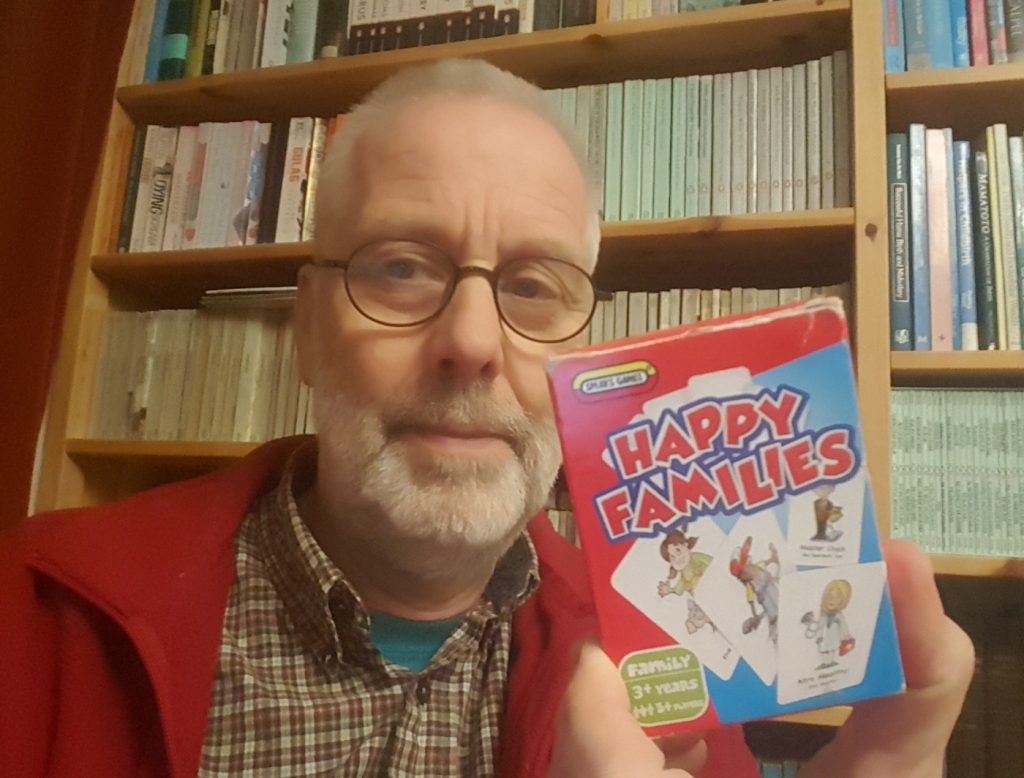
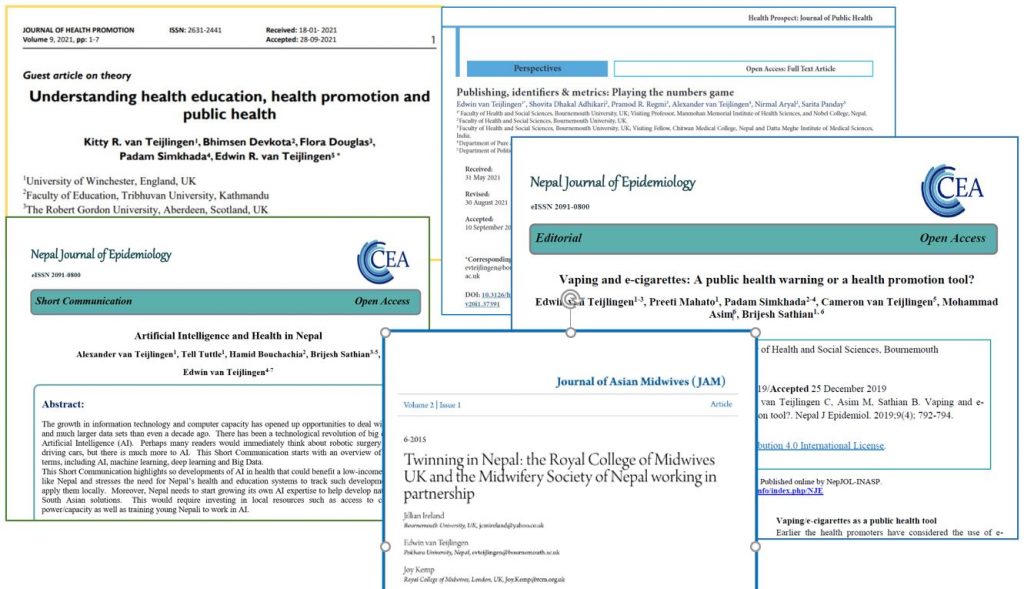












 New Nepal scoping review on maternal & neonatal health
New Nepal scoping review on maternal & neonatal health Fourth INRC Symposium: From Clinical Applications to Neuro-Inspired Computation
Fourth INRC Symposium: From Clinical Applications to Neuro-Inspired Computation Writing policy briefs
Writing policy briefs Upholding Excellence: The Concordat to Support Research Integrity
Upholding Excellence: The Concordat to Support Research Integrity ECR Funding Open Call: Research Culture & Community Grant – Application Deadline Friday 12 December
ECR Funding Open Call: Research Culture & Community Grant – Application Deadline Friday 12 December MSCA Postdoctoral Fellowships 2025 Call
MSCA Postdoctoral Fellowships 2025 Call ERC Advanced Grant 2025 Webinar
ERC Advanced Grant 2025 Webinar Horizon Europe Work Programme 2025 Published
Horizon Europe Work Programme 2025 Published Horizon Europe 2025 Work Programme pre-Published
Horizon Europe 2025 Work Programme pre-Published Update on UKRO services
Update on UKRO services European research project exploring use of ‘virtual twins’ to better manage metabolic associated fatty liver disease
European research project exploring use of ‘virtual twins’ to better manage metabolic associated fatty liver disease